Hernia: What You Need To Know
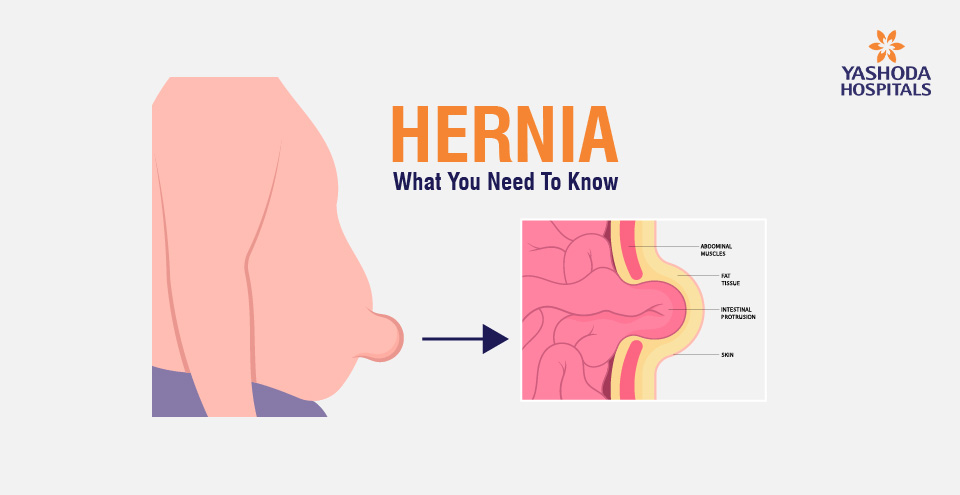
Hernia introduction
What is a hernia?
Hernia is a condition that results when an organ or tissue bulges out through the weak region of the muscular wall. Hernia might develop in different regions of the body, but it often occurs in the groin and abdominal regions. Some of the common locations of hernias include the groin region, umbilical region, femoral region, abdominal region, and former surgical regions.
The majority of the hernias are not life-threatening, and most of them need a surgical correction as they won’t go away on their own. Umbilical hernias are commonly seen in children, whereas inguinal and femoral hernias often occur in adults. Men are more likely to be affected by hernias when compared to women. About 90% of inguinal hernia surgeries are performed on men, while 70% of femoral hernia repairs are performed on women.
Types of hernias and their surgical methods
How many types of hernias are there?
There are many types of hernias; however, a few prevalent types that may affect the majority of individuals are as follows:
- Umbilical hernia: An umbilical hernia is a type of ventral hernia that occurs at or near the umbilicus, or navel. It occurs when tissue, fat, or an organ—usually a section of the intestine—pushes or bumps through a weak area in the abdominal wall close to the belly button.
- Inguinal hernia: As it originates in the groin region, inguinal hernia is also often referred to as a groin hernia. The protrusion of the abdominal contents through the weak spots in the abdominal wall is characteristic of an inguinal hernia.
- Femoral hernia: A femoral hernia is a type of groin hernia which is typically caused by the protrusion of fatty tissue or a part of the colon into the groin area. It usually occurs close to the top of the inner thigh.
- Hiatal hernia: The upper part of the stomach pushes up through the diaphragm and into the chest area, resulting in a hiatal hernia.
- Incisional hernia: An incisional hernia is an abdominal wall hernia that occurs close to the site of a previous surgical incision. It is basically a ventral hernia. The midline is the location where incisional hernias most commonly occur. An incisional hernia can develop from any abdominal surgery that requires an incision in the abdominal wall.
In addition to these hernias, there are some less common hernias that might affect individuals. These include:
- Epigastric hernia
- Diaphragmatic hernia
- Spigelian hernia
- Obturator hernia
- Littre’s hernia
- Richter’s hernia and more
Types of hernia surgery : Three types of hernia operations are usually carried out:
- Open hernia surgery: It is often referred to as open herniorrhaphy, is the traditional method where the surgeon makes a single large incision to repair the hernia. In this procedure, an incision is made close to the hernia sites by the surgeon, who then puts the protruding tissue back into place. Following that, the surgeon sutures the weaker abdominal wall back together and often applies a hernia mesh patch for extra reinforcement. This method is commonly used for hernias. Prosthetic, mesh, and suture repairs are commonly done by this method. There are three ways to repair mesh: the open approach, the onlay method, and the sublay method.
- Laparoscopic hernia surgery: As discussed previously, a laparoscope—a thin, flexible tube with a camera—is inserted to guide the surgery during a minimally invasive laparoscopic hernia repair technique, in which small incisions are made.
- Robotic hernia surgery: In this kind of laparoscopic procedure, the surgical instruments are controlled by a robotic system operated by the surgeon. It is, nevertheless, more sophisticated and usually more costly.
Laparoscopic hernia surgery : Laparoscopic hernia surgery also referred to as laparoscopic herniorrhaphy is a minimally invasive surgical procedure that is used to treat the hernias. In this procedure a thin flexible tube with a camera called a laparoscope is inserted. This procedure is more commonly used for inguinal, umbilical, femoral and hiatal hernias.
Laparoscopic hernia surgery involves the following steps:
- Initially, anaesthesia is given to the patient.
- Then 3–4 small incisions are made near the abdomen or groin region based on the location of the hernia.
- A laparoscope is inserted through one of the incisions.
- A small, tiny surgical instrument is operated on by the surgeon through other incisions.
- A small mesh is reinforced at the herniation site in order to prevent further herniation.
- Finally, the incisions are closed with staples or stitches.
Types of mesh for hernia repair : Usually, three categories of mesh are generally used for hernia repairs; they are as follows:
- Synthetic meshes: Synthetic meshes can be divided into subgroups based on material, composition, pore characteristics, weight/density (from ultra-lightweight to super-heavyweight), and mechanical parameters like tensile and burst strength, elasticity, and stiffness. They can also be woven from expanded polytetrafluoroethylene or an extruded monofilament (like polyester or polypropylene).
- Biological meshes: For the repair of the abdominal wall, several kinds of biologic meshes made from human or animal tissues (such as pig, cow, or horse) are used. The procedure of washing biological tissue renders it non-immunogenic by eliminating cellular debris without causing harm to the connective tissue scaffold. The scaffold serves as an acellular biologic matrix into which the recipient’s native tissue proliferates and eventually replaces the biologic tissue.
- Biosynthetic meshes: Synthetically produced long-acting resorbable meshes have resorption profiles ranging from six to thirty-six months. In general, this period of time allows the deposition of native collagen to account for wound strength and durability without raising the risk of persistent mesh infection.
Complications of the hernia and hernia surgeries
Hernia complications : The complications of the hernia include:
- Infection: Severe discomfort and infections may result from inadequate blood flow to the abdominal wall.
- Incarceration: It results when the protrusion of the hernia contents is stuck inside a weak spot in the abdominal wall.
- Strangulation: A hernia that has been strangulated loses blood flow. As a result, the tissue might become inflamed and infected, ultimately leading to tissue death. This needs immediate medical attention.
- Bowel obstruction: Bowel obstruction might be caused by the blockage of the passage.
Hernia surgery complications : The complications of the hernia surgery include:
- Formation of the hematoma or seroma: With an incidence of 5–25%, it is a common complication of laparoscopic hernia surgery. Most of these clear up on their own in four to six weeks. This can be managed by reducing the hernial sac’s detachment from the cord components.
- Neuralgias: Neuralgias were more common in the intraperitoneal onlay mesh technique. Usually, tack entrapment or mesh-induced fibrosis are the causes of their development. By avoiding the mesh lateral to the deep inguinal ring, this complication can be avoided.
- Retention of urine: The incidence of urinary retention ranges from 1.3% to 5.8%. It is typically seen in older patients, particularly prostate patients.
- Testicular pain: Excessive sac dissection from the cord structures results in testicular swelling and testicular pain.
- Mesh rejection: Mesh rejection is an adverse response to the surgical mesh commonly used to repair hernias. It can result in persistent pain, inflammation, and even mesh migration, or the shifting of the mesh.
- Infections due to the mesh and wounds: Mesh infection is a potentially lethal complication, so throughout the entire process, great care must be given to maintain aseptic precautions. Whereas, wound infections are quite low when compared to mesh infections.
- Recurrence: Even in cases where surgery is successful, a hernia may recur in 1–5% of cases. Larger hernias and specific kinds of hernias are more prone to triggering this complication.
Which doctor to consult for Hernia?
The general physician will evaluate your hernia and recommend diagnostic tests, potentially referring you to a general surgeon or laparoscopic experts to undergo the surgery. Consulting a hernia specialist is very crucial in order to improve quality of life.
Experiencing pain and dragging sensations in the groin or abdominal areas, don’t worry!
Precautions and recovery after the surgery
Precautions after hernia surgery: Precautions to be followed after the hernia surgery are as follows:
- Don’t lift the heavy weights until they are cleared by the surgeon.
- The patient will be permitted slowly by the surgeon to do the regular activities, but not immediately.
- Fiber-rich foods are good to eat after the surgery.
- Adequate fluid intake and diet are needed.
- A healthy weight should be maintained.
- Wound care should be taken properly, as guided by the surgeon or healthcare staff.
- Avoid smoking and alcohol consumption.
- Avoid stress and strain.
- Proper hygiene should be maintained.
- Prescription medications and regular follow-ups should be maintained.
Hernia surgery recovery time: The majority of the patients usually recover within 1-2 weeks after the surgery. However, the recovery time might differ from patient to patient as it depends on the type of surgery undergone, the patient’s overall health condition, and other comorbidities. Some patients might take more than 4 weeks to recover completely.
Conclusion of hernia: People of all ages and genders can be affected by hernias, which are particularly frequent. Although they are usually not fatal, they can have significant negative effects on quality of life and require medical attention. Hernia surgery is usually successful and provides a permanent solution. As previously stated, there are a number of treatment options for hernias, including open and laparoscopic procedures. Consulting a hernia specialist is very crucial in order to improve quality of life.
The Yashoda Hospitals provides the best quality of care for hernias with excellent outcomes and improved quality of life.
References:
- Introduction: https://my.clevelandclinic.org/health/diseases/15757-hernia
- Types: https://www.webmd.com/digestive-disorders/understanding-hernia-basics#1-3
- Types of hernia surgeries: https://www.medicalnewstoday.com/articles/142334#treatment
- Complications: https://www.healthline.com/health/hernia#complications
About Author –

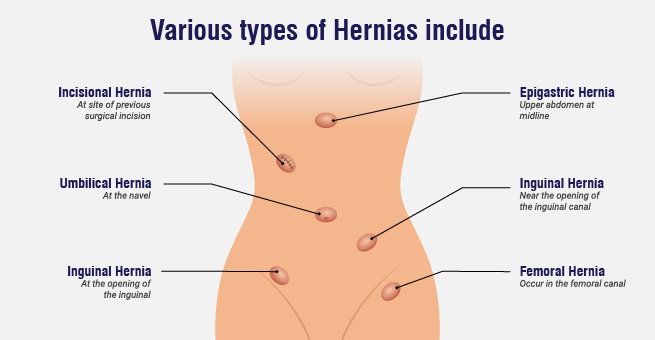
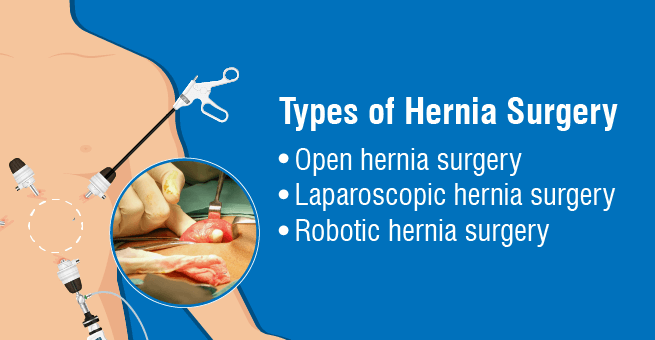
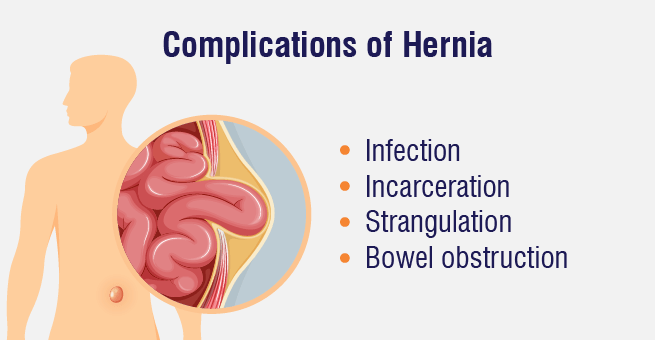
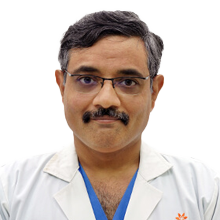


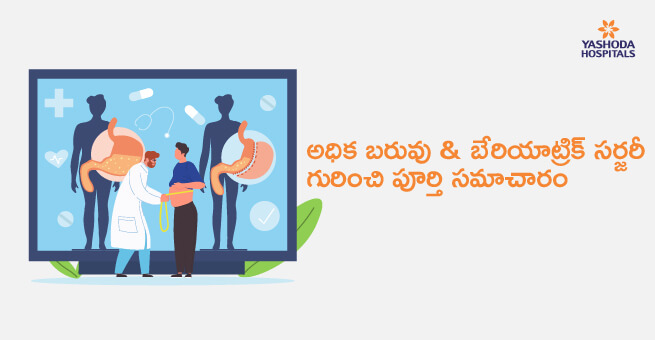
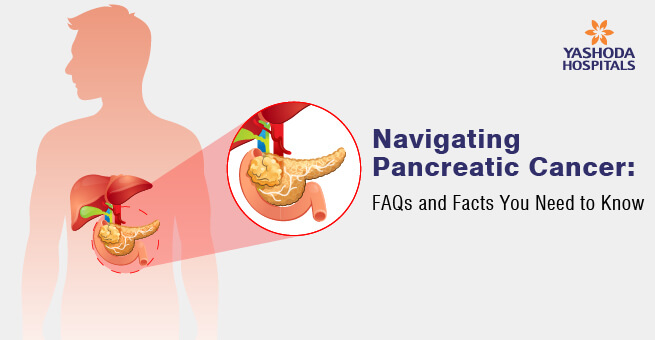
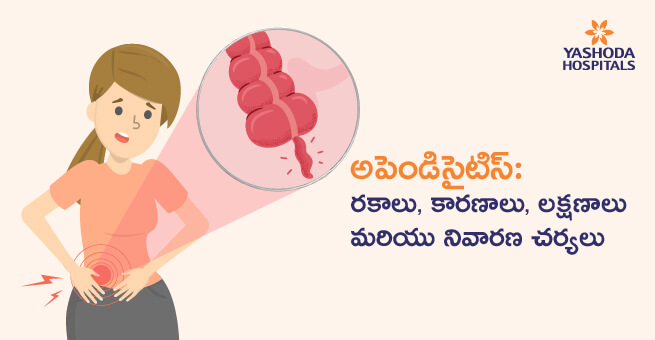
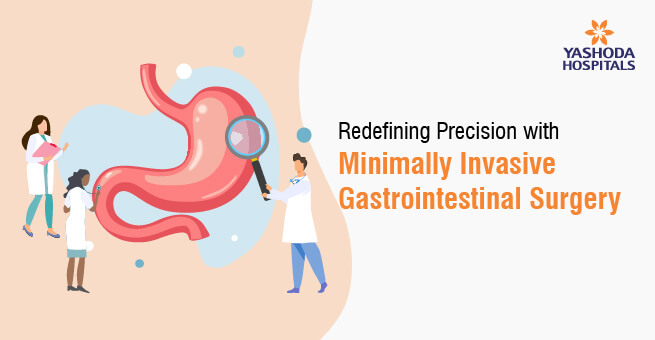
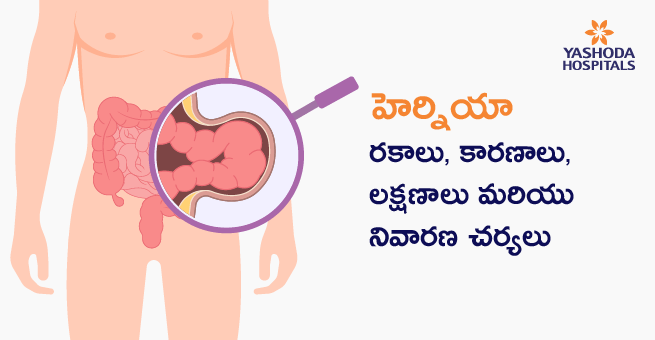
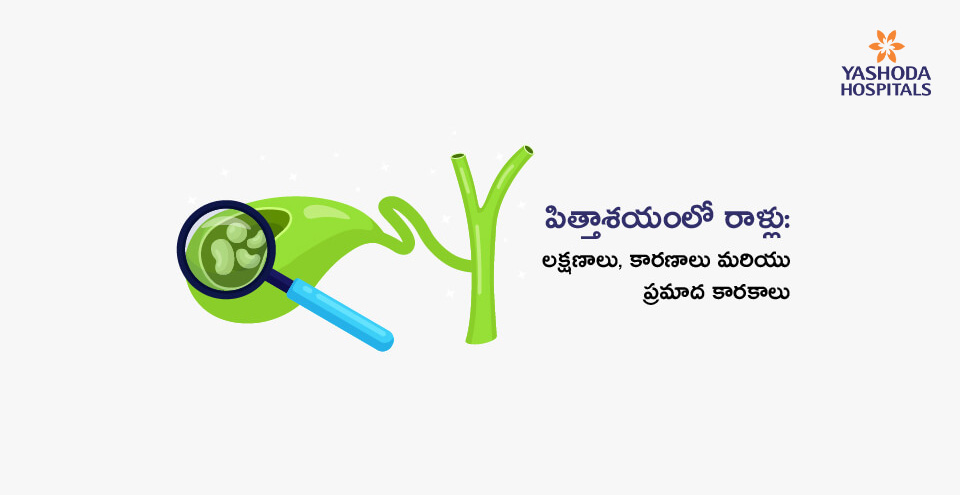
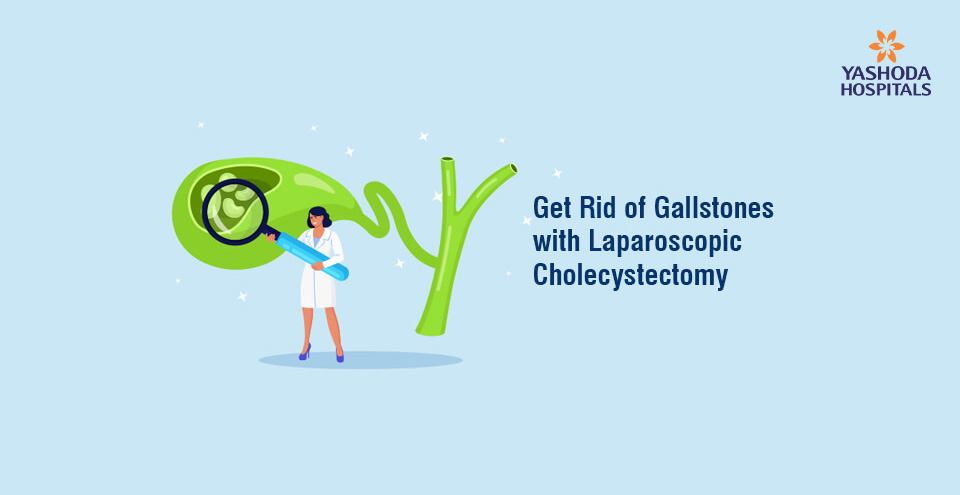
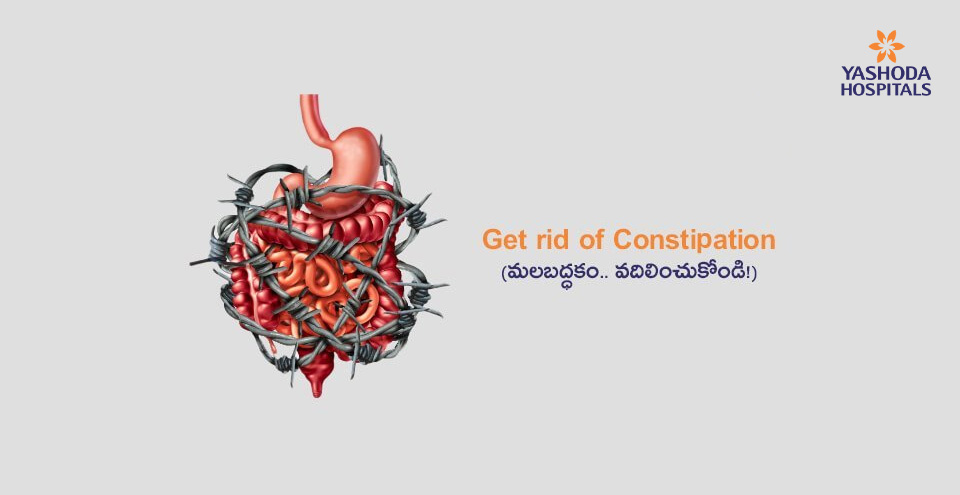

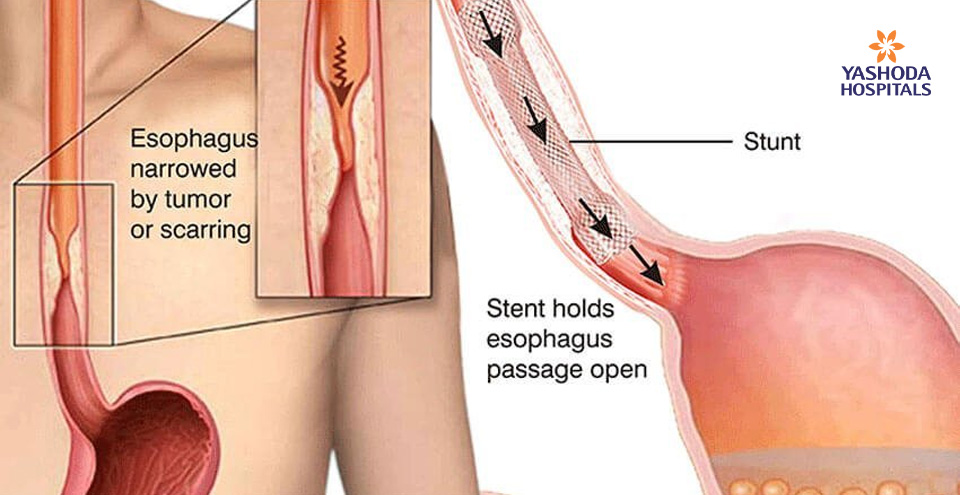





 Appointment
Appointment WhatsApp
WhatsApp Call
Call More
More

